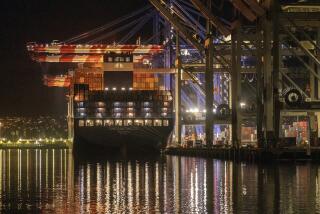Metrolink and Public Transit
- Share via
Your Perspectives on Public Transit (Commentary, Nov. 27) began with UCLA’s Richard Weinstein advising that over the next 30 years Southern California will spend an average of “$7 billion a year” on transportation initiatives that may be “shortchanging our future.” To buttress Weinstein’s academic rambling, Ryan Snyder and Antonio Villaraigosa offered that subsidizing the commuting habits of “upper-middle-income train riders” may be “a recipe for disaster.” Jim Sims, leaving no public-funding stone unturned, detailed meaningless statistics promoting his self-interest in Commuter Transportation Services.
The four writers withheld demonstrable evidence that Southern California traffic congestion will only be solved by constructing an adequate highway system.
Traffic congestion did not suddenly appear. From 1968 to 1988, the population increased by 20% while the vehicle miles traveled increased almost 100%. Highways were expanded by just 5% and highway capital investment (adjusted for inflation) actually decreased by 18%.
The cost to build and operate enough rail capacity to overcome traffic congestion could exceed the total assessed value of all Southern California property. Certainly freeways require more real estate than rail roadbeds, but space is available at an affordable price.
Will new freeways be immediately filled to capacity? No: With the number of registered vehicles growing much faster than the population, it took 20 years for traffic congestion to get to where it is today. Now that almost everyone has an automobile, automobile growth will follow population growth (we can only drive one at a time), and most importantly, 1992 automobile engines are as much as 90% cleaner burning than 1968 models. Cleaner burning automobile engines, paid for with private dollars, are and will continue to be responsible for air quality improvement.
WAYNE KING
Orange
More to Read
Sign up for Essential California
The most important California stories and recommendations in your inbox every morning.
You may occasionally receive promotional content from the Los Angeles Times.













